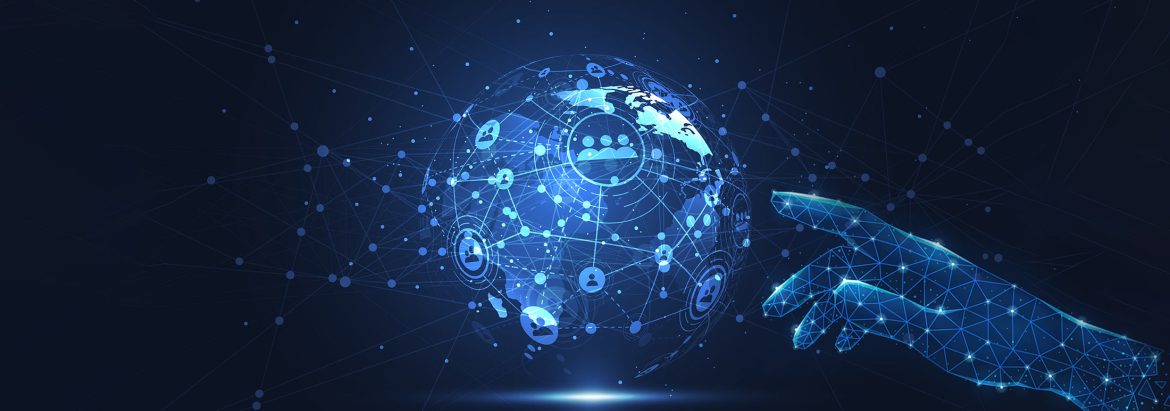
How AIOps Prevents the DDoS Attacks (Distributed Denial of Service) in Telecom Networks


A few decades back, telcos didn’t have much to worry about service attacks. However, the story isn’t the same in 2022 for telcos. The taxonomy of network attacks is more significant than ever in 2022. Many deadly cyberattacks could disrupt service availability within minutes. One such deadly attack for telcos is the DDoS (Distributed Denial of Service). Traditional network security methods are failing to stop DDoS attacks completely. It is why telcos and organizations are shifting towards artificial intelligence for network security. Read on to know more about DDoS attacks and how AI prevents them.
A DDoS attack disrupts the regular traffic on any system or service by overwhelming it. A DDoS attack overwhelms a system or service by directing unexpected traffic. The surrounding infrastructure of the targeted system/servicer is also dominated by unexpected traffic in a DDoS attack. DDoS attackers use several compromised computer systems to direct unexpected traffic to a working system or service. A network of systems/machines is created to initiate a DDoS. The network of compromised machines, systems, or IoT devices is also connected to the internet.
The network of compromised machines contains malware that allows the attacker to control them remotely. Individual compromised devices can also be referred to as bots. A network of compromised machines can be referred to as a botnet. When a server or network is targeted by a botnet, unexpected requests are transferred to the target IP address. Due to the unexpected request on the target’s IP address, the normal traffic is denied service. Each bot involved in a DDoS attack acts as a genuine internet device. IT teams find it hard to separate the normal traffic from the attack traffic. As the normal traffic is denied reaching its destination, service availability of a server/network/system is seriously hampered.
Telecom networks are sensitive and need continuous monitoring to prevent cyberattacks. As telcos are depending more and more on digital transformation services and solutions, the possibility of cyberattacks is increasing. Not only telcos but also organizations having a dedicated network infrastructure also suffer from DDoS attacks. Many corporate organizations have a reliable IT infrastructure for offering services to consumers. DDoS attacks can disrupt the service availability of corporate organizations and also impact business continuity. Some ways in which telcos and organizations identify a DDoS attack are as follows:
Once a DDoS attack is successful, the attacker will disrupt the service availability resulting in downtime. Telcos and other organizations fear downtime, as it directly impacts the ROI (Return on Investment). A single minute of downtime can impact the organization’s ROI heavily. If it was possible, organizations could have safeguarded themselves from DDoS attacks. Several challenges stop organizations to preserve service availability and prevent DDoS attacks. The challenges in 2022 to fight against DDoS attacks are as follows:
• In the OSI model, a DDoS attack can be targeted for any layer. Various components of network connection can be disrupted via DDoS attacks. IT teams must monitor network activity on the application layer, transport layer, session layer, and other layers. Monitoring each layer is a must for IT teams to preserve their service availability.
• A few years back, many telcos relied on the manual monitoring of network infrastructure to prevent DDoS attacks. However, the number of people relying on network infrastructure is increasing rapidly. The scope for monitoring the network activity is now more than ever. A telecom operator cannot keep hiring employees to monitor network activity as the network scales.
• Organizations can identify a DDoS attack only after it has hampered the service reliability. What’s the profit of discovering a DDoS attack once the damage is done? Telcos and other organizations struggle to detect DDoS attacks proactively or in real-time.
As you can see, several challenges prevent organizations from fighting DDoS attacks. Traditional monitoring and security systems are of no use to avoid sophisticated DDoS attacks. To preserve service availability, organizations are shifting towards AI technologies in 2022.
Considering the increasing complexity of DDoS attacks, AIOps (Artificial Intelligence for IT Operations) is the only solution. An AIOps-based analytics platform can offer a single view of the entire network data. Based on the network data, it can identify the changes in the traffic. Even the subtle differences in normal traffic can be identified by an AIOps-led monitoring system. At present, attackers automated the delivery of malware via bots. To fight automated DDoS attacks, you cannot rely on manual support.
An AIOps based analytics platform can collect network data and perform event correlation in real-time. Anomalous behaviour of network traffic can be identified with event correlation. Also, AIOps can study network data trends to predict DDoS attacks. With proactive detection of DDoS attacks, organizations can get themselves ready to fight it. An AIOps-led monitoring system runs on predictive analytics models which learn after each cyber-attack.
AIOps can also suggest steps to mitigate DDoS attacks based on past episodes. Human overseers do not need to spend hours/days identifying DDoS attacks with AIOps. One can also slash network security costs with AIOps. Adopt an AIOps strategy to prevent DDoS attacks in 2022!
Please complete the form details and a customer success representative will reach out to you shortly to schedule the demo. Thanks for your interest in ZIF!